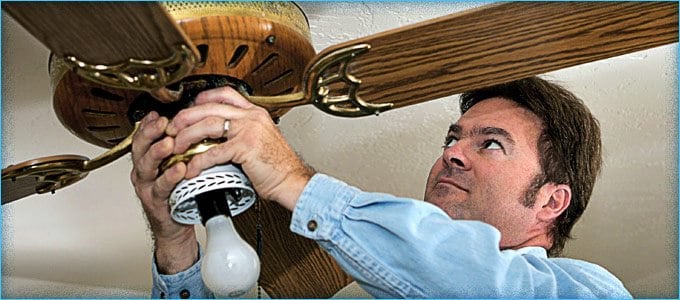How Do Ceiling Fans Work in Winter? Tips for Staying Warm and Energy Efficient


Ceiling fans are a fantastic tool for maintaining comfort in your home year-round, but they're not just for keeping you cool in the summer.
With a simple adjustment, ceiling fans can also keep your home warm in the winter while lowering energy costs.
RetroFoam of Michigan has more than 20 years of experience making homes more comfortable using foam insulation. So, how does that equate to ceiling fans? Well, we also know a lot of tips and tricks to help homeowners achieve the comfort and energy efficiency they are looking for.
Let's dive into how ceiling fans work in winter, which way they should turn, and how to change their direction.
How Do Ceiling Fans Work in Winter?
Many homeowners wonder, "Does a ceiling fan help in winter?" The answer is yes.
Here's how it works.
Warm air from your heating system naturally rises and collects near the ceiling, leaving the cooler air in the living space below. Running your ceiling fan in the correct direction creates a gentle updraft, which pulls the cooler air upward and pushes the trapped warm air back down along the walls.
This process redistributes the heat, making the room feel warmer without needing to crack up the thermostat.
What Direction Should a Ceiling Fan Be Turning During Winter?
When it comes to winter, the most common question is, "What direction do I run my ceiling fan in the winter?"
The answer is clockwise.
When the ceiling fan spins clockwise at a low speed, it creates the updraft needed to circulate warm air downward. To check the direction of your fan, stand directly beneath it. In the clockwise setting, you shouldn't feel a breeze; instead, you'll notice the air feels warmer and more evenly distributed, according to Energy Star.
How to Change Ceiling Fan Direction for Winter
If your ceiling fan is still set for summer use, it's easy to switch directions for winter.
Here are directions to change your ceiling fan's direction.
- Turn Off the Fan: Ensure the ceiling fan is off, and the blades have come to a complete stop before making adjustments.
- Locate the Direction Switch: Most ceiling fans have a small toggle switch on the motor housing. Flip this switch to change the blade rotation.
- Test the Fan: Turn the fan back on at a low speed and confirm it's rotating clockwise.
If your fan has a remote control or wall panel, you may find a dedicated button for changing the direction. Always refer to your fan's manual for specific instructions.
Do Ceiling Fans Help in Summer Too?
Ceiling fans aren't just for winter.
In the summer, they can help keep your home cool while reducing energy costs. Set your ceiling fan to rotate counterclockwise at higher speeds. This creates a downdraft, producing a cooling breeze that can make the room feel up to 8 degrees cooler.
This wind-chill effect allows you to raise your thermostat by about 4 degrees, potentially saving up to 30 percent on cooling costs.
Additional Tips for Ceiling Fan Efficiency
- Ceiling Height Matters: For homes with high or vaulted ceilings, ceiling fans may require a longer downrod to function effectively in winter.
- Regular Maintenance: Dust the fan blades frequently. Dust buildup can hinder the fan's performance and contribute to indoor allergens.
- Energy Savings Year-Round: Whether in winter or summer, proper use of a ceiling fan can reduce your energy costs significantly, making it an eco-friendly addition to your home.
Using Your Ceiling Fan in Winter
Using your ceiling fan properly, whether in winter or summer, is an easy and effective way to stay comfortable while saving energy.
By switching directions with the seasons, you can maximize your fan's potential and enjoy a cozier, more efficient home all year long.
Related Articles
Why is My House So Cold in the Winter
How to Prepare a House for Winter: 10 Things to Do Before the Snow Flies

